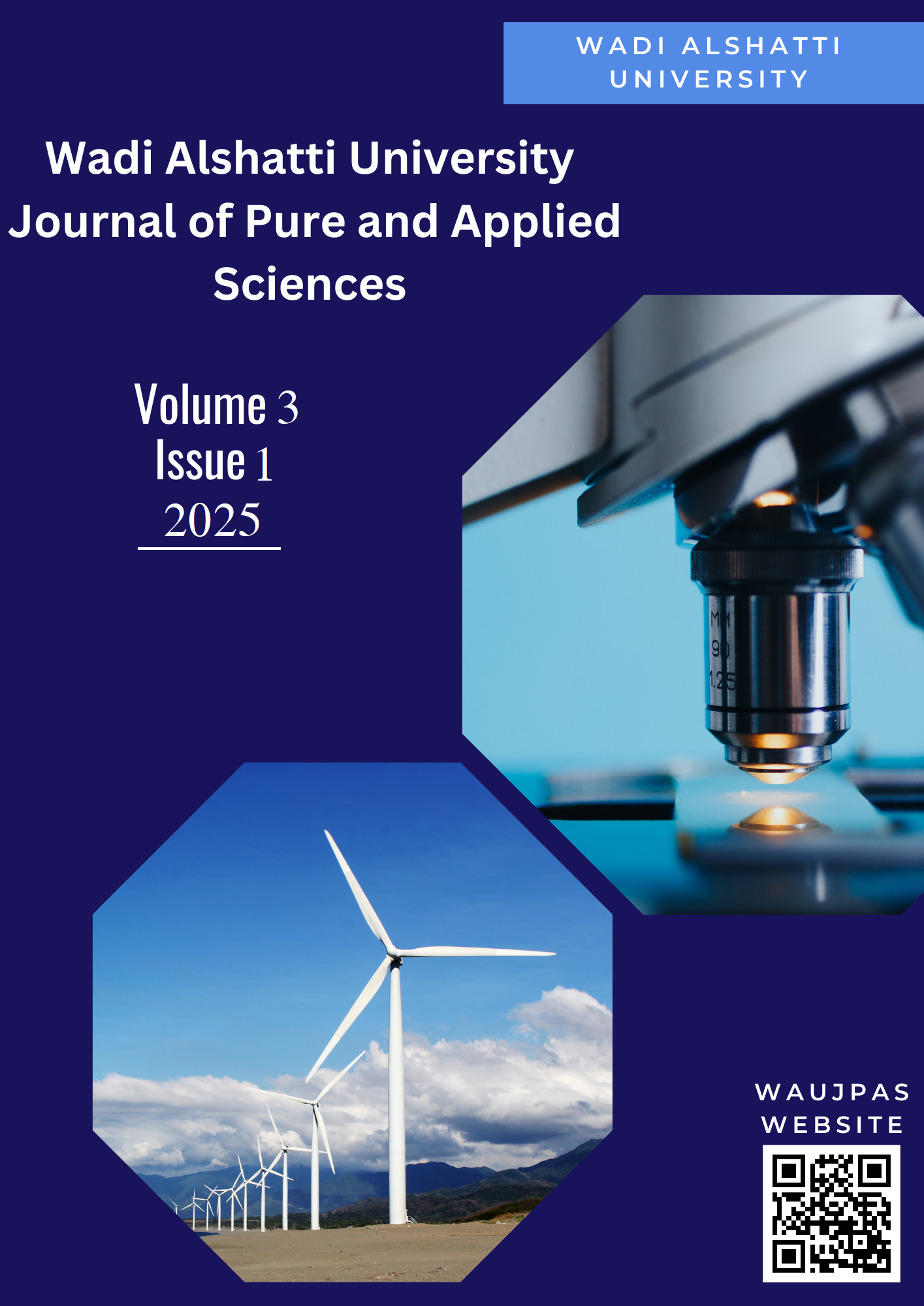Morphological, Physiological and Biochemical Study of Wild Growing Dill (Anethum Graveolens L.) and Comparison with Cultivated Dill in Misurata-Libya
DOI:
https://doi.org/10.63318/waujpasv3i1_12Keywords:
Wild type of anethum gsnevoevar, Cultivated anethum graveolens, Morphological changes, Chlorophyll, Proline, Active substancesAbstract
The research compared the wild Anethum graveolens L. plant with the cultivated plant by studying its morphological, physiological, and biochemical characteristics. Physiological studies revealed differences in their tissues' and dry water contents and their chlorophyll content, with wild Anethum graveolens L. having higher chlorophyll content than cultivated plants reaching 0.55 and 0.20 mg/g FW respectively. The statistical analysis showed increased sugar content in almost all parts of the wild Anethum graveolens L. plant compared to the cultivated plant. The proline recorded a lower rate in all parts of the wild-type plant. The content was 0.65μg/mg DW in the leaves of the wild-type, while, the cultivated plant showed higher content reaching 0.99μg/mg DW. The study also found variations in the concentration of active substances in the plants, including alkaloids, glycosides, saponins, and flavonoids. These differences could be due to their ability to adapt to environmental conditions, providing insight into the connection between plant genetic traits and their geographic and ecological distribution.
Downloads
Downloads
Published
Issue
Section
License

This work is licensed under a Creative Commons Attribution-NonCommercial 4.0 International License.
This journal uses Creative Commons Attribution-Noncommerical 4.0 International License (CC BY-NC 4.0), which permits use, sharing, adaptation, distribution and reproduction in any medium or format, as long as you give appropriate credit to the original author(s) and the source, provide a link to the Creative Commons license, and indicate if changes were made. To view a copy of this license, visit https://creativecommons.org/licenses/by-nc/4.0/.
Copyright of articles
Authors retain copyright of their articles published in this journal.





